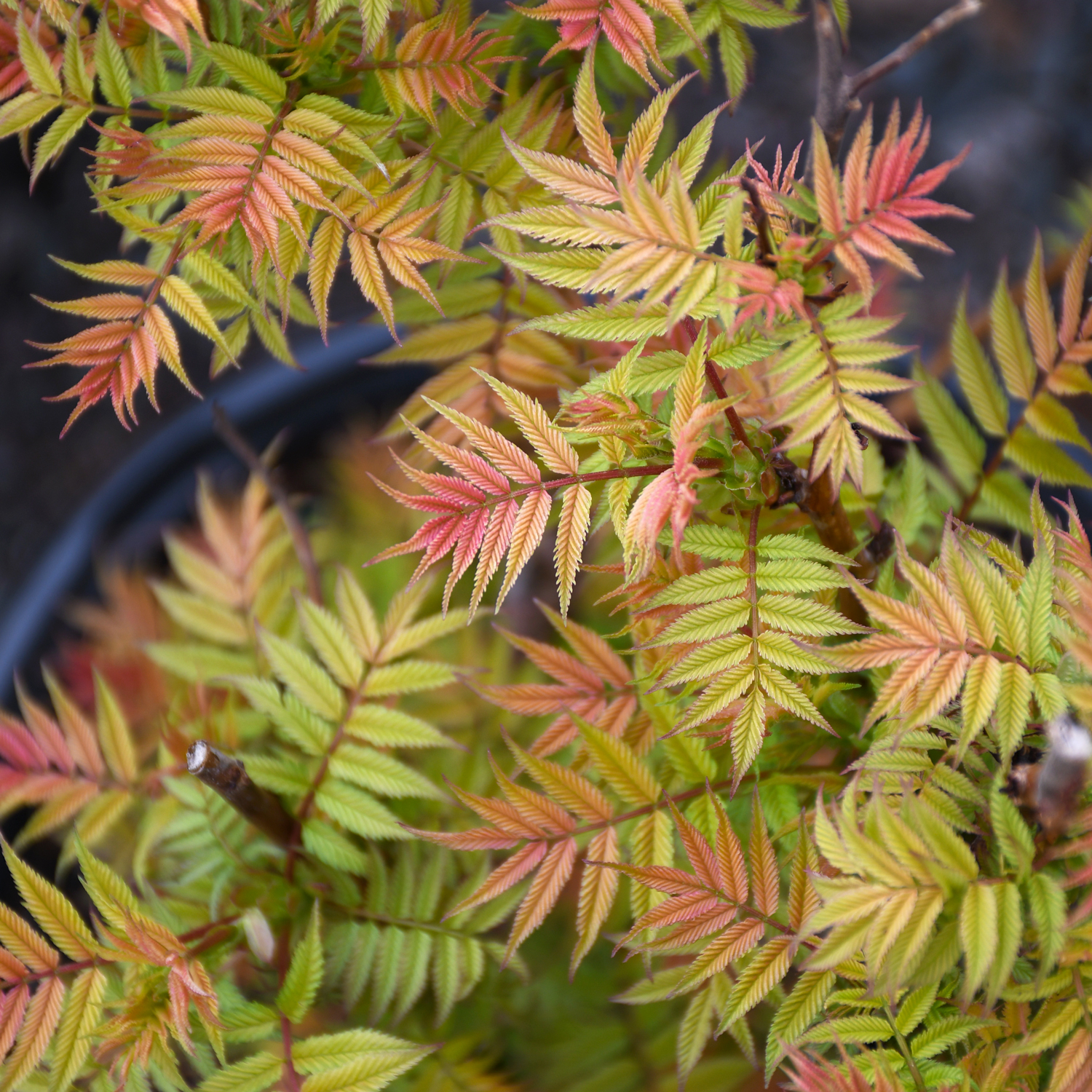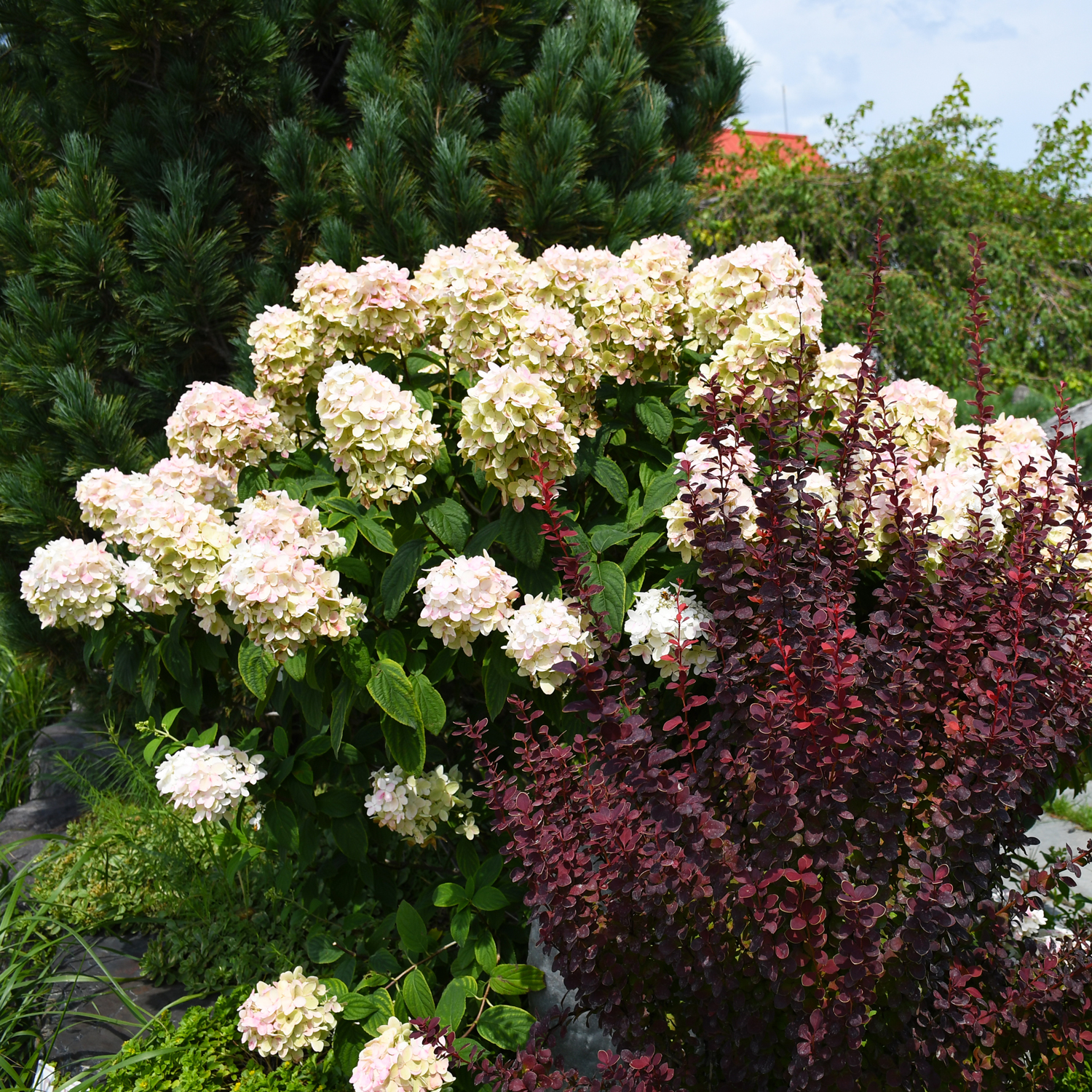Rhus, Fragrant Sumac 'Gro-Low'



Out of stock
Coming soon, still growing- Sun Preference
- Full-Sun, Part-Sun
Description
A low growing and compact shrub with interesting foliage turning brilliant colors in fall and bright yellow flowers in spring; makes an excellent groundcover as it tends to sucker, filling in areas quickly, does well in shade.
Minnesota's Largest Selection of Shrubs
Elevate your landscaping with Gertens' unmatched variety of shrubs! Selecting the right shrubs for your backyard can enhance its beauty and functionality. Consider factors like sunlight, soil type, and mature size when choosing shrubs. For sunny areas, flowering shrubs like roses or hydrangeas can add color and charm. In shady spots, opt for shrubs like azaleas or hostas. Evergreen shrubs provide year-round interest and privacy, while deciduous shrubs offer seasonal color changes. At Gertens, we offer a wide selection of shrubs to suit every backyard need.
Details
Height: 3 feet
Spread: 6 feet
Sunlight:![]()
![]()
![]()
Hardiness Zone: 3a
Description:
A low growing and compact shrub with interesting foliage turning brilliant colors in fall and bright yellow flowers in spring; makes an excellent groundcover as it tends to sucker, filling in areas quickly, does well in shade
Ornamental Features
Gro-Low Fragrant Sumac has yellow flowers along the branches from early to mid spring. It has green foliage throughout the season. The serrated compound leaves turn an outstanding orange in the fall. The brick red fruits are held in clusters from late summer to late fall.
Landscape Attributes
Gro-Low Fragrant Sumac is a dense multi-stemmed deciduous shrub with a ground-hugging habit of growth. Its average texture blends into the landscape, but can be balanced by one or two finer or coarser trees or shrubs for an effective composition.
This shrub will require occasional maintenance and upkeep, and can be pruned at anytime. It is a good choice for attracting butterflies to your yard. Gardeners should be aware of the following characteristic(s) that may warrant special consideration;
- Suckering
Gro-Low Fragrant Sumac is recommended for the following landscape applications;
- Mass Planting
- General Garden Use
- Groundcover
- Naturalizing And Woodland Gardens
Planting & Growing
Gro-Low Fragrant Sumac will grow to be about 3 feet tall at maturity, with a spread of 6 feet. It has a low canopy. It grows at a slow rate, and under ideal conditions can be expected to live for approximately 25 years.
This shrub performs well in both full sun and full shade. It is very adaptable to both dry and moist locations, and should do just fine under typical garden conditions. It is not particular as to soil type, but has a definite preference for acidic soils, and is subject to chlorosis (yellowing) of the leaves in alkaline soils. It is highly tolerant of urban pollution and will even thrive in inner city environments. Consider applying a thick mulch around the root zone in winter to protect it in exposed locations or colder microclimates. This is a selection of a native North American species.
| SKU | Container Size |
| S2230 | #2 Container (2 Gallon) |
| S2240 | #5 Container (5 Gallon) |
* Not all container sizes may be available at this time. See store for details on specific container size availability.
More Information
| Gerten Grown Plants | Gerten Grown Plants |
|---|---|
| Sun Preference | Full-Sun, Part-Sun |
| Mature Height (Range) | 2 - 5 feet |
| USDA Hardiness Zone | 3, 4, 5, 6, 7, 8 |
| Common Family Name | Sumac |


